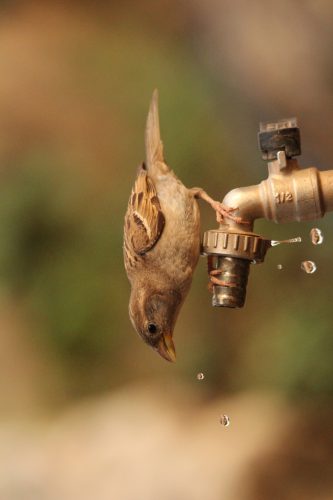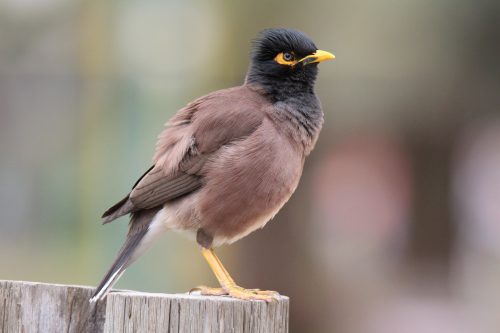The researchers from the Technion who conducted the study warn: this process has negative future consequences for the ecosystem in Israel

Turning natural areas into urban or agricultural areas harms native birds and benefits invasive birds, and this process has negative ecological consequences. This is what Assoc Prof. Assaf Schwartz and Dr. Agath Kulaoni of the Technion claim in a study published in the journal Biological Conservation. Prof. Mishneh Schwartz is the head of the Laboratory for the Study of Man and Biodiversity at the Faculty of Architecture and Urban Planning.
The study shows that populations of common local birds are dwindling throughout the country in general, and in particular in urban areas that have been invaded by species such as the myna, the monk parakeet and the sparrowhawk. According to Prof. Mishna Schwartz, "The changes in the Israeli landscape in the 20th century led to an increase in the size of the populations of species such as the house sparrow, the barn owl, the bulbul and others, but in the last 15 years the trend has changed. Those familiar species that once thrived throughout the country are now on the decline. What is worrying is that these declines are accompanied by sharp increases in the numbers of individuals of invasive species. The populations of the Maine and the Darra, for example, have grown at a dizzying rate of 843% and 250% (respectively) in the last 15 years." The research shows that in Yarakon Park, where many of the bird invasions began at the end of the 20th century, it is almost impossible to observe the same local species that once thrived in the park.
The invasive species compete with the native species for limited resources, and it seems that in this competition the invaders are winning. This process, and the increasing damage to the natural habitats, disrupts the balance in the ecosystem and endangers rare species as well as common species that were previously not in danger.

In order to examine the trends in bird populations in Israel, the study was based on three databases collected over the past 15 years: (1) surveys and studies in Yarkon Park in Tel Aviv; (2) The Great Bird Count survey - a citizen science project, led by Shlomit Lifshitz from the Center for the Care of Wild Birds and the Society for the Protection of Nature, where the general public has been helping with bird monitoring since 2006; (3) Long-term monitoring conducted over twenty years at the station for long-term research in the nature reserve in Ramat Handiv. The three surveys indicate an increase in the populations of invasive species and a numerical decrease in many of the local species. "Currently, the distribution of the invasive species is mainly concentrated in urban and rural areas," says Dr. Agath Kolauni, "but there are signs that these species will also reach other areas throughout Israel. That is why it is very important to create an interface to stop their spread."
The monitoring in Arkon is done with the funding and cooperation of RTG (Nature and Parks Authority). Dr. Yariv Malihi, an ecologist of the central district of Bartag, says that "the authority monitors with concern the intrusion of invasive species into nature reserves and national parks in Israel in general and in the central region in particular. We believe that this intrusion endangers the diversity of species in the protected areas and the existence of biological and ecological processes for which these areas were declared."
"Almost two decades ago, we began to investigate the impact of invasive bird species on local birds," concludes Associate Professor Schwartz. "We found that the species compete with local species such as the house sparrow and crowd them out. Unfortunately, the current research suggests that our predictions of species suppression have become reality. I am afraid that my children will not be able to hear and see the sparrows, scouts and nightingales which are common species in Israel today."
The research was funded by the National Science Foundation with the help of a grant from the Technion for outstanding postdoctoral students and the Nature and Parks Authority. The researchers were based on various databases, including the project "Counting wild birds in the yard with public participation", which has been operating since 2006, and a long-term ecological study conducted once every three years in Ramat Handiv since 1988.
More of the topic in Hayadan:

3 תגובות
How is it different in the decrease of numbers from Israel and the increase in numbers from Diaspora Jews? natural processes…
Same as in the human population!!!
So instead of seeing sparrows and nightingales, they will see Myna and Darra. Why should man correct nature? Intervention brought the sparrows, another intervention brought the species, maybe stop interfering and leave the birds to their own devices?